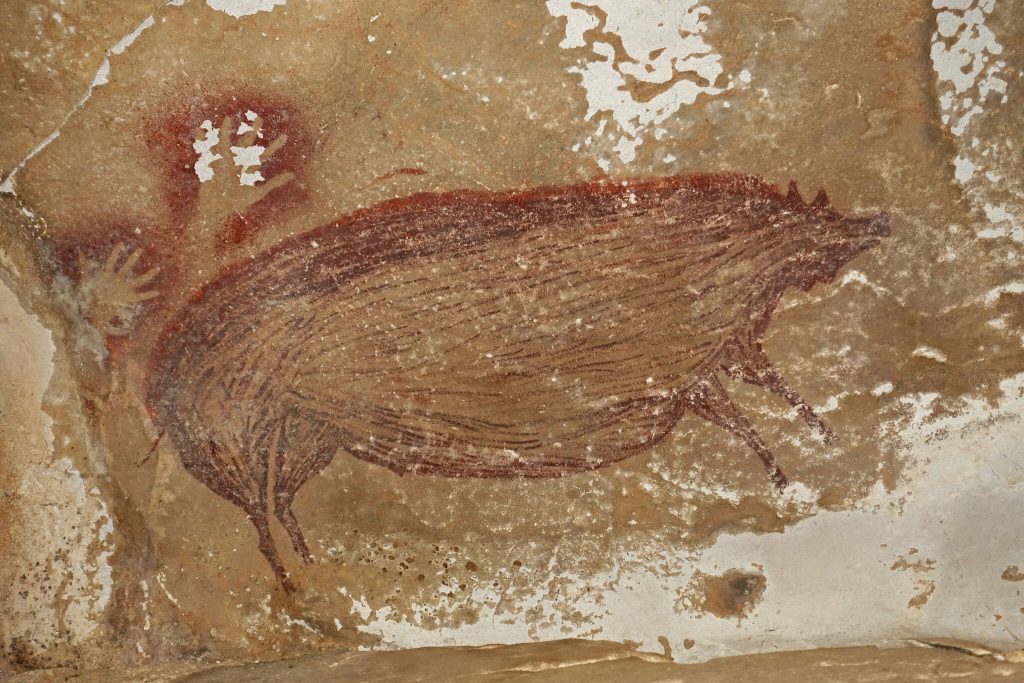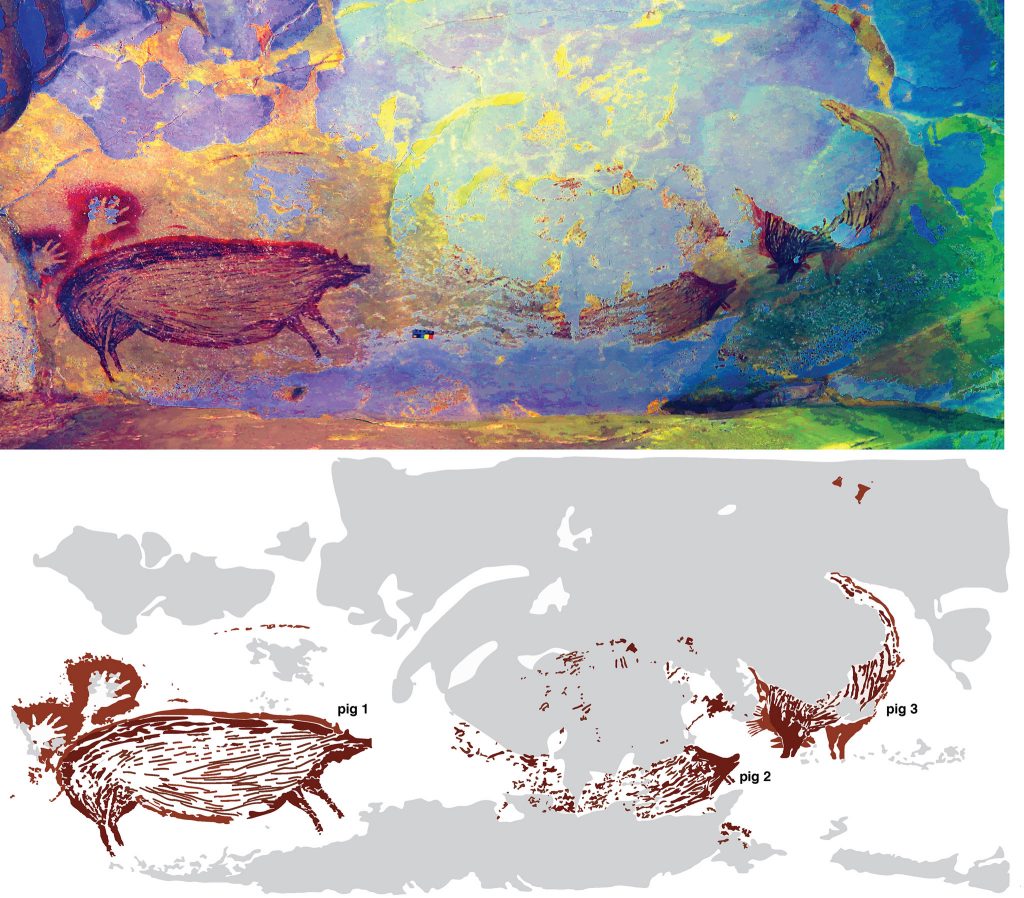You are currently browsing the tag archive for the ‘Homo Sapiens’ tag.

This may be the world’s oldest known representational artwork– a red ochre painting of a warty pig recently discovered in the Leang Tedongnge cave of Sulawesi, Indonesia. The full work is actually three pigs–two pigs fighting (?) while one pig watches from a distance, but the fighting pigs have been effaced by scores of millennia, whereas the bystander pig has somehow avoided the elements as well as the fray.

Archaeologists believe the painting is 45,000 years old, an extraordinary age in dealing with human artifacts. They arrived at that number by means of measuring the decay of infinitesimal amounts of uranium in mineral deposits formed on top of the image (this methodology is not without drawbacks and controversies, but remains the go-to mechanism of dating for 45,000 year old non-carboniferous artworks). Sulawesi is the world’s eleventh largest island. Because it is located at the nexus of three small and two giant tectonic plates it resembles a squashed asterisk. Homo Erectus found a home in Indonesia as early as 2 million years ago, but Homo Sapiens reached the island, around the time this painting was made, 45,000 years ago. Modern Austronesian people (who make up the majority of Indonesia’s living population) only arrived 2000 years ago.

The pig portrayed here is interesting as well! It is a Celebes Warty pig (Sus celebensis), a medium sized pig which was originally native solely to Sulawesi. The warty pig is the only pig species to be domesticated other than Sus scrofa, the Eurasian wild pig, which probably makes up 99 percent (or more) or the world pig population. Clearly such pigs were of enormous importance to the first homo sapiens of Indonesia–a nearby cave painting from 43.900 years ago (previously the world’s oldest known representative artwork) shows spear-wielding humans approaching pigs and small buffalo. Yet, as with all art, the full reasons behind the creation of the work remain elusive. What is certain is that it is rather good! In addition to an expressive sense of lively movement, the pig has true character and personality. Just look at its hungry face!


Ancient Clam Shell Jewelry from Prehistoric Israel
Intriguing archaeological news from Qafzeh Cave, a prehistoric burial site located at the bottom of Mount Precipice in Israel. The anatomically modern human remains found interred in the cave are 92,000 years old–among the oldest Homo Sapiens remains discovered outside of Africa. However the cave did not just contain ancient skeletal remains–indeed the upper levels of the cave (which is to say, the younger/newer layers) were filled with stoves, stone tools, animal bones and all manner of campsite detritus. Yet, we are interested in the layers below the ancient graves which predate them by tens of thousands of years. In these strata, anthropologists discovered the shells of Glycymeris bivalves, carried from the Mediterranean Sea 35 kilometers away.
The shells bear evidence of having been prepared (perferrated/polished) and hung on wild flax string. Some shells even had ochre stains on them. These were special adornments–jewelry–for the humans who dwelt in the Lower Galilee region of Israel 120,000 years ago. They are striking in their lack of obvious utility, and are among the first cultural artifacts known.
Alas, we can not know the precise meaning which these adornments had for the hunter-gatherer folks of prehistoric Galilee, but, based on everything we know about subsequent humans we can certainly make intelligent guesses. The shells were ornaments which indicated status. They could also have indicated group identity or reflected personal beliefs of the wearer. Another nearby cave had shells from 160,000 years ago–which must also have been carried by ancient humans to that site. Yet the 160,000 year old shells had no perforations or marks of wear from string. Somewhere between 120,000 and 160,000 years ago we made some real leaps forward in terms of string and accessories! It doesn’t surprise me that the phylum Mollusca was involved (obviously clams had been important to us as food and tools for tens of thousands of years before we discovered their use as stringed body ornaments), yet I do find it worthy of comment.
